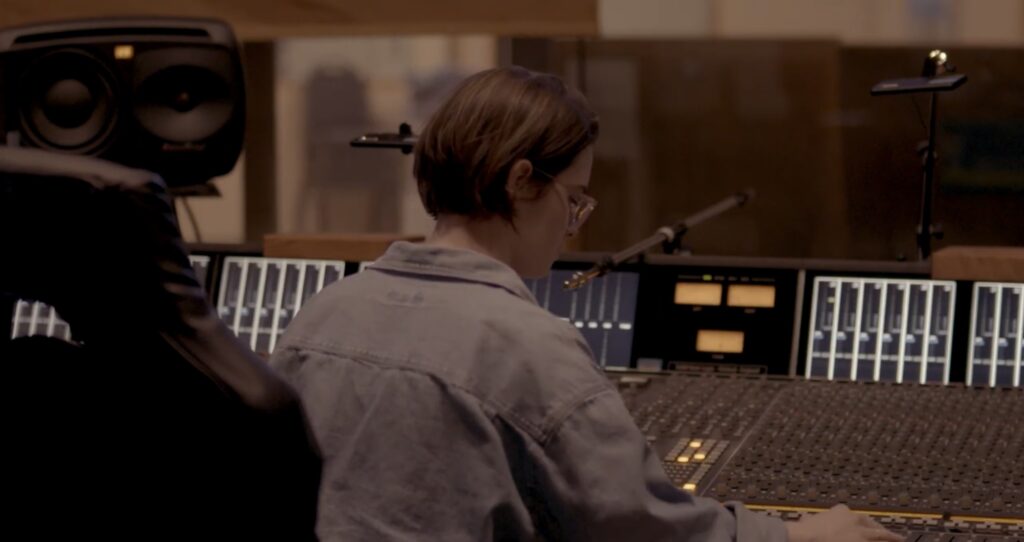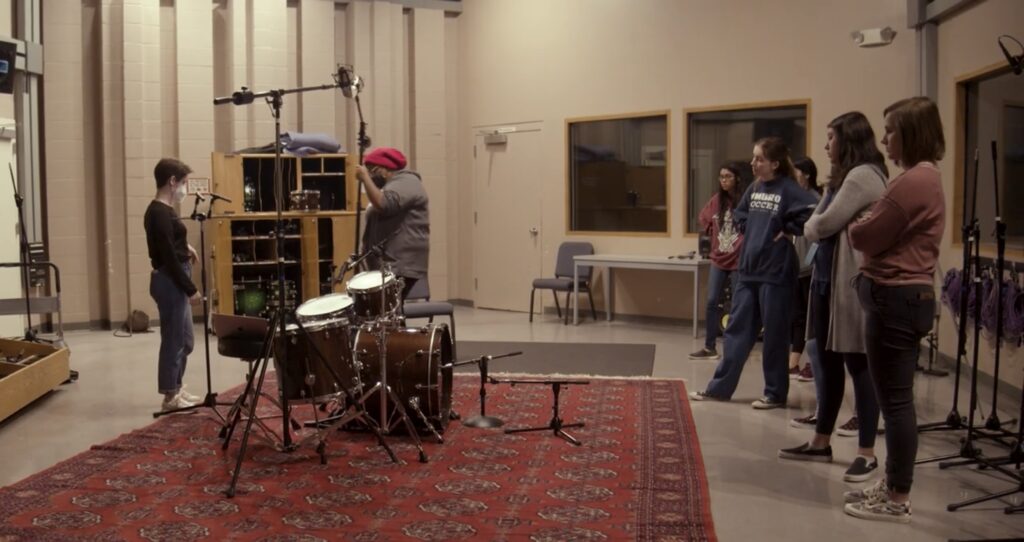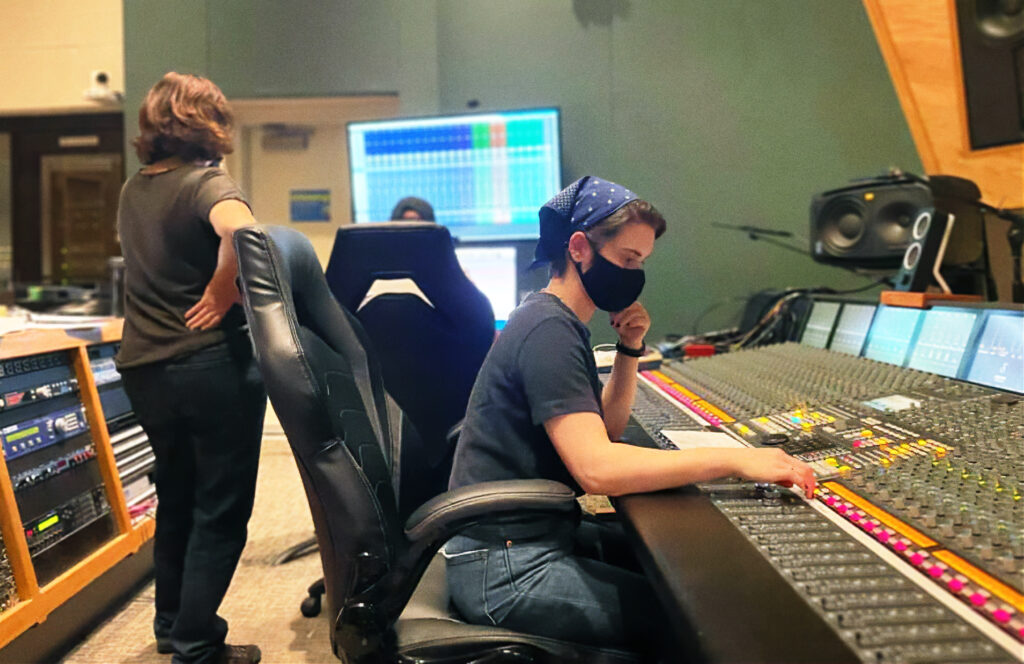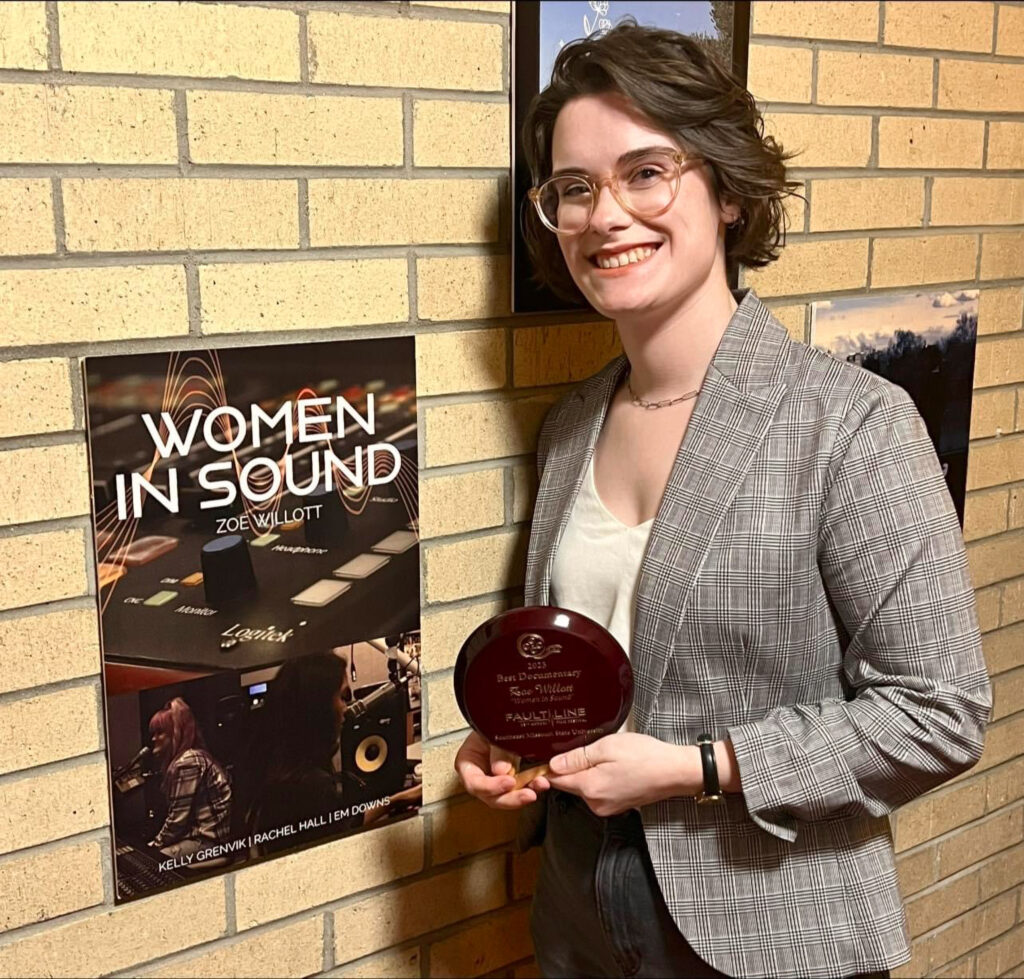By Jasmine Jones
Look at the statistics, and it’s clear: Women are extremely underrepresented in the music and audio industry.
According to the “Women in the Mix Study,” women account for only 21.6% of musical artists, 12.6% of songwriters and 2.6% of producers in the industry, based on 2019 data. In the same study, 77% of women respondents felt they were treated differently in their music industry jobs because of their gender, with women of color reporting the highest levels of discomfort in the workplace.
Despite the difficulties women reported facing in the study, 78% of respondents felt satisfied in their careers. This speaks to the passion these women feel for the art of sound and craft of music. To most of them, it’s not just a career; it’s love.
Zoe Willott is one of those women. Willott grew up in St. Louis, but currently lives in Nashville, Tenn.; she received her Master of Fine Arts degree in Recording Arts and Technology from Middle Tennessee State University (MTSU) in May 2023. From mu- sic production to sound design and dialogue recording, Willott studied many aspects of the sound industry and how it can be used for storytelling.
During her time in the program, she directed a short documentary “Women in Sound,” which won Best Documentary at Southeast Missouri State University’s Fault Line Film Festival in April 2023. This film highlights three female students in her master’s program who discuss their passions within audio, from radio to live mixing to sound engineering.
Women in the sound industry
Willott’s documentary identifies the common experiences her peers face as women in a male-dominated industry. In the documentary, one of the interviewees, Rachel Hall, explains how she always wanted to work in audio but was discouraged from the career in high school: Her counselor wanted her to pick something there was a clear “career path” for.
“I’ve also had people just tell me straight to my face that women are performers and guys are technicians,” Hall says in the documentary. “Instead of trying to pick those fights, you just need to stop and let your work talk for you.”
Em Downs, another student in the documentary, tells the story of her first audio class at MTSU: She remembers calling her mother afterwards and saying, “Mom, I was the only girl.” Later, she met other women in the program, but she wishes there were more.
“I didn’t know that I was going to fall in love with radio the way I did. I had no idea until a woman came to me and said, ‘What do you think about working in radio?’” Downs says in the documentary. “Once I finally did [radio] with her, she said, ‘You’re amazing. You have it naturally, but you just have to believe in yourself and build that confidence.’ And I never had a guy say that to me.”
The third student featured in the documentary, Kelly Grenvik, explains how supportive the small community of women in audio are of each other.
“It’s a little bit challenging sometimes, because we are so underrepresented that you find yourself struggling to find common ground sometimes with students, sometimes with staff. … But the women we do have in the program, we’re all very supportive of each other, and I think that’s the beautiful part of it,” Grenvik says in the documentary.
Willott’s purpose for the film is to open up a discussion surrounding inequality in the sound industry and give a platform for other women in audio to share their stories. She expanded on this with her thesis film under the same title, “Women in Sound.”
In this second documentary, Willott interviews three professionals who discuss their experiences as women in the audio industry and the progress they’ve seen throughout the years. The documentary explains the ways that, as Hall expresses in the short documentary, historically, society has presumed women are the performers and men are the technicians. This perception, however, is slowly changing.
“The community [of women in sound] is small, but the [film] I did most recently made me realize the community sticks together a lot. … It was really encouraging to see women doing their thing and succeeding in the industry,” Willott says.
How Willott got started
Willott’s own journey with sound started at the age of eight when she began studying piano. In her undergraduate studies, she continued this pursuit by studying jazz performance at the University of Illinois Urbana-Champaign.
“When the time came to pick a degree, I was like, I have no idea what I want to [do] except play piano. So, that’s what I did,” Willott says.
During her undergraduate studies, Willott also created her own music. She released her first album, “Telling Other People’s Stories,” under the name Zzo in 2018. She didn’t have access to “cool, shiny synthesizers” or professional editing software at the time, so she produced the album exclusively on Logic Pro for Mac with their pre-recorded instruments and sounds.
Producing her own music and the onset of the pandemic — when it became difficult to use a performance degree — led Willott to continue her studies in sound and dive into other aspects of the art form.
Since graduating from Middle Tennessee State University, Willott has done dialogue editing and soundwork for podcasts, along with producing more music as Zzo. Eventually, she would love to dive into more post-production work for film.
Sound and the human experience
Willott is drawn to sound as an art because of its ability to “mimic the human experience” and provide emotional cues for listeners.
“I feel like a lot of times when people are starting out with sound mixing [in video], they turn the music down really quiet [in projects], and it’s like, yes, you should be able to hear what people are saying, but if that music drives what the person is saying, it makes a huge difference. … The reason why film trailers are so moving and why people want to see the film after the trailer is because that music is moving the trailer along,” Willott says.
If someone turned off the sound while watching a movie trailer, the visuals alone would not have the same impact. Similarly, if dramatic music with a constantly-changing tempo was placed over a video of an outdoor dinner party, viewers might assume something sinister is bubbling beneath the surface. This is one example of how sound has the power to reinvent the reality of what we see and experience. Willott says studying sound for years of her life has reinforced this fact and changed the way she hears.
Willott says she will hear something out in the world and think, “Oh, that’s this technique that I learned in school.” Frequencies — the number of times per second a sound wave repeats itself, measured in hertz (Hz) — for example, are something Willott is more conscious of in her daily life because of her background in sound.
Willott says planes directly overhead produce different frequencies than planes farther across the sky, and she notices it now. After working with these concepts every day, it’s hard for Willott not to hear the world around her differently.
Sound and environment
In her immersive sound class, Willott says they talked about how humans’ ears and brain “tune out sounds.” She says after hearing a ceiling fan for a few minutes, people adjust to the sound and don’t hear the fan anymore; however, if the fan suddenly stops running, people notice the change. These everyday environmental sounds are important to take into account when re- cording a video or sound project.
The air conditioner hum, refrigerator noise and wind outside the window all contribute to what is known in the sound world as “room tone” — the ambient sound present in a given environment. Recording a couple of seconds of room tone allows editors to keep the sound consistent across a recorded scene. This prevents viewers from being jolted out of that on-screen created world.
“You got to be consistent, so it sounds like you’re in the same place the whole time,” Willott says.
Performance and remaining present
Although Willott does not perform as much as she used to, she sees a lot of similarities between musical performance and sound work.
“Something that’s similar between the two is the creativity, which I didn’t really think was going to be the case, but there’s a lot of ways to be creative with sound that you wouldn’t necessarily think of,” Willott says. “But audio is an instrument, if you think about it. You do have to practice and practice and practice before you get good at it.”
Willott says sound also has a way of keeping us present. With performance, musicians are forced to remain in the moment as they play their music in front of other people. With sound work on a film set, technicians focus on adapting to their current environment as they find the best technique to record sound. Even in post-production sound work, artists are working with sounds as they hear them, refining what they hear until it fits their vision.
With everyday tasks and work, Willott says music has an ability to help her focus.
“I listen to music a lot, and it does help me with my work. I’ve tried not putting in my headphones all day and seeing what happens, and it’s completely different than it would be when I was listening to music,” Willott says. “I think, for me, music helps me be more present.”
A Meditation in Gratitude for What Is Around Us
Use a moment to listen to the place you’re in
By Mia Pohlman
Quiet and still yourself.
Close your eyes if you want to.
Put your hand on your stomach and breathe in slowly and deeply for four seconds, filling your diaphragm so your stomach and hand rise.
Then, exhale slowly for four seconds so your stomach and hand sink. Repeat this process as many times as you’d like.
Then, when you’re ready, begin to notice the sounds around you. What can you hear? Identify a sound. Give thanks for the person, animal or object producing that noise.
Then, listen for another sound. Give thanks for the person, animal or object producing that noise.
Continue until you’ve identified at least five sounds around you.
Isn’t it beautiful how the world and our selves all the sudden open up when we pay attention?
When you’re ready, give thanks for your self and your own life, being in this exact place at this exact time with these exact people and animals and objects surrounding you.
Wow. You made it. You are here.





